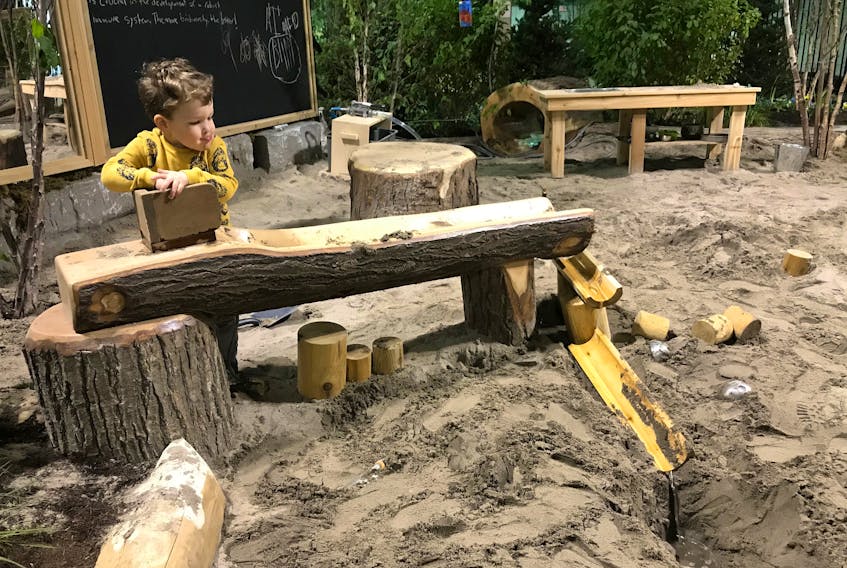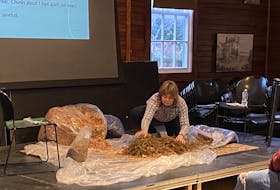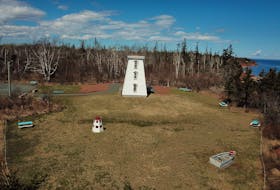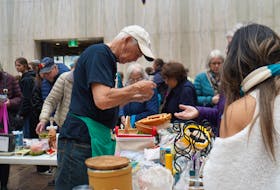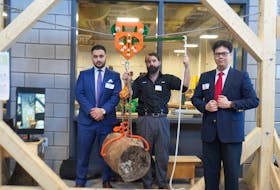The irony of it is impossible to ignore.
Canada Blooms, the largest flower and garden festival in the land, was shut down hours before it started one week ago in Toronto. Located in the epicentre of the six-acre collection of 10 tiny homes, 17 feature gardens, an international floral competition representing eight countries, three stages for public speaking and the retail market place featuring over 100 garden retailers, was a behemoth of a nature play ground installed by Adam Bienenstock and his company Bienenstock Natural Playgrounds, a Toronto based landscape professional specializing in natural playgrounds. https://www.naturalplaygrounds.ca/
The irony was that the playground was designed to demonstrate how natural play spaces build young immune systems that will, according to Bienenstock, “Beat the next pandemic.” The Bienenstock feature contained over 2000 tonnes of natural materials, including 650 cubic yards of sand and mulch, thousands of hours of skilled craftmanship and a half million dollar investment.
Around 150,000 people were expected to attend Canada Blooms and the National Home Show, which occur concurrently at the Enercare Centre.
At Adam’s invitation, Mark’s grandchildren and two friends were given free reign in the play space last Saturday. We discovered firsthand just how engaging the concept is to youngsters.
It was interesting to see where each of them moved in the play-space. The red oak slide was a hit, the sand pit and chalk boards, the playhouses as well, but nothing quite stopped the kids in their tracks quite like the water works. Pull a lever or pump a handle and watch the water pour from a tap, into a wooden trough, down into the sand pit. Or a bucket. Or your hands.
DIRTY HANDS
We now know, based on scientific evidence, that playing out of doors on natural surfaces, which do not include plastic, metal or rubber, is a therapeutic experience for kids. When asked how we know this, Bienenstock pointed us to the long honoured Japanese tradition of "forest bathing" which is now taking on world-wide interest. And the Helsinki Alert, which states, “Spending time in nature provides protections against a startling range of diseases… the answer lies in nature's ability to enhance the functioning of the body's immune system.” https://www.sciencedaily.com/releases/2015/09/150916162120.htm
It was only a matter of minutes before each kid had “dirty hands”: sand, mulch and soil covered appendages and big smiles.
The concept of introducing children to natural play areas is not new. Time was, Mom pushed us out the door in the morning and told us to be home for dinner. Mark recalls endless hours of hunting for pollywogs, digging through to the other side of the earth in his sandbox and sharpening popsicle sticks into “knives” on the street curb. That was in the 60s and much has changed.
For one, parents are very aware of safety hazards. The new natural playgrounds are designed to minimize risk without eliminating the opportunities for kids to take measured risks of their own. Taking a risk, is after all, is a great method of learning. The edges of logs are dulled, heights climbed are measured against the risk of falling and copious amounts of natural sand and bark mulch are used to cushion the blow when a fall does occur.
Active Healthy Kids Canada Report Card, which is created by the Active Healthy Kids Global Alliance and authored by Dr. Mark Tremblay of Laurentian University, uses “time in nature” as a critical measure of how much time out of doors is appropriate for children. They recommend a minimum of 90 minutes a day.
Bienenstock explains, “Human beings evolved along the riparian buffer’s next to freshwater. The biodiversity found there is the most robust place where macro and micro organisms required for a healthy immune system thrive.” A riparian zone is a vegetation zone near a stream, usually forested.
He reminds us that the average screen time for children in Canada is 52 hours a week. The average time playing outdoors is 48 minutes or 7 minutes a day.
He admits that not all children have access to a state of the art Bienenstock playground. However, a backyard is the perfect place to add a tree stump, log or sideways tree. “Build a sensory table on your balcony and fill it with sand and water. Walk to the local park with your kids and take them off the trail.” He adds, “bring a bag of acorns of pieces of bark and stones home to play with.”
He says, “And adults need to back off a bit. Let kids play, explore and learn. They are doing the work of a child out there, playing in the muck.”
All of this may sound like a contradiction to the advice currently provided by health officials to wash hands well, use anti viral wipes and keep our distance from one another. However, given the importance of all this information at this juncture, we suggest that this may be the perfect time for a “nature experience” for kids and adults alike.
No one is saying that we should stay indoors during the pandemic. On the contrary, follow the protocols issued by the department/ministry of health but get some fresh air.
With a longer view of our situation, Bienenstock suggests, “Kids need an emotional connection to nature. If they do not experience it, they will not love it, and if they do not love it, they will not protect it or help it heal.”
Our kids, our future.

